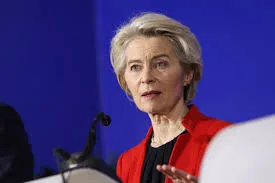Key Points:
“A happily married couple chose to end their lives together rather than face prolonged illness and separation.”,
“The decision has sparked ethical and societal discussions about end-of-life options and the right to die.”,
“Advocates for right-to-die laws see it as an example of personal autonomy and dignity.”,
“Opponents raise concerns about mental health, pressure on vulnerable individuals, and the slippery slope argument.”,
“The case highlights the need for broader discussions about palliative care, mental health support, and alternative end-of-life options.”
Insights:
“The couple’s decision reflects a growing desire for control over death and dying.”,
“The case exposes the limitations of current end-of-life care options for some individuals.”,
“It underscores the need for open communication about death and dying within families and with healthcare providers.”
The couple’s decision reflects a growing desire for control over death and dying., It underscores the need for open communication about death and dying within families and with healthcare providers.
Content:
A recent news story about a happily married couple choosing to end their lives together has sparked intense debate about end-of-life options and the right to die. The couple, facing the prospect of declining health and potential separation, opted for what they saw as a final act of love and autonomy. Their decision has drawn both support and criticism, with advocates praising their courage and choice while opponents raise concerns about mental health, societal pressures, and the potential for abuse. The case highlights the complex and deeply personal nature of end-of-life decisions and underscores the need for greater societal dialogue and support for individuals and families facing these challenges.
Our Perspective:
Beyond the polarized debate, this story unveils a deeper human narrative – a testament to enduring love and a plea for agency in the face of mortality. While the couple’s choice may not resonate with everyone, it compels us to confront our own mortality and consider what constitutes a ‘good death.’ It challenges us to engage in open and honest conversations about death and dying, to advocate for comprehensive end-of-life care options, and to respect the individual choices people make, even when those choices are difficult to understand.



